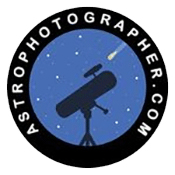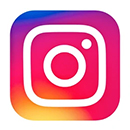|




|
|

MOON PHOTOGRAPHY TIPS


TRIPOD
A sturdy and secure tripod will greatly reduce camera shake and improve the sharpness of your images.

REMOTE SHUTTER RELEASE
Another easy way to reduce camera shake is to use a remote shutter (wired or wireless). Most cameras offer a timer function if you don't have a remote shutter.

LENS CHOICE
You should use a 200mm lens at minimum. There are many inexpensive 500mm lens kits and I had great results with them when I first started taking photos of the moon.

FOCUS
As you research moon photography, you'll see many sites recommend both auto and manual focus. You can have great results with either option, but I found the auto focus setting was one less thing to worry about when I was first starting out. Be sure your focus points are centered on the moon. For lenses that don't have the ability to auto focus, the focus should be set to infinity. Warning - some lenses can focus past infinity and the moon might appear blurry. Be sure to check focus often just in case you bump the focus ring. Nothing like checking your images after you're all done and finding out they are all out of focus.

EXPOSURE
Exposure is comprised of a few different settings - ISO, shutter speed and aperture. As the moon phase changes, you'll adjust these to ensure you're not overexposed or underexposed.
When first starting out, try the Looney 11 rule. The Looney 11 rule is a basic guideline to use when photographing the moon. Set your aperture to f11 and have your ISO and shutter speeds match. For example, ISO 100 and shutter speed 1/100 or IS0 200 and shutter speed 1/200.
Try to use as low an ISO as possible as more noise is introduced at higher settings.
You don’t want a shutter speed that is too slow. Although it does not look like it, the moon is moving fast and a fast shutter speed is needed to capture high detail. Most of my moon shots are 1/100 or 1/200.
It's better to be a little underexposed than overexposed. If your images are overexposed, you can't get that data back in post processing.

SHOOT IN RAW
Shoot in RAW format because this will allow more flexibility for editing in software like Lightroom and Photoshop. If you shoot in JPEG format only, you will have fewer options to adjust white balance, contrast and brightness.

MOON PHASES
A full moon is beautiful in the sky, but boring when photographed due to the lack of shadows being cast on the surface. Plan photography sessions for quarter moons and/or half moons to see amazing surface details like mountains and craters.

MOON POSITION
Try to take photos when the moon is directly overhead because the light the moon is reflecting is traveling a shorter distance through Earth’s atmosphere.

BRACKETING
Take a lot of images during your photography sessions. Try different ISO, shutter speed and aperture combinations. This will give you more images to choose from in post processing.

LIGHTROOM and PHOTOSHOP
Use these programs to adjust your image exposure, white balance, contrast, shadows, whites, blacks, etc., to get the perfect balance for a beautiful photo.


|
|